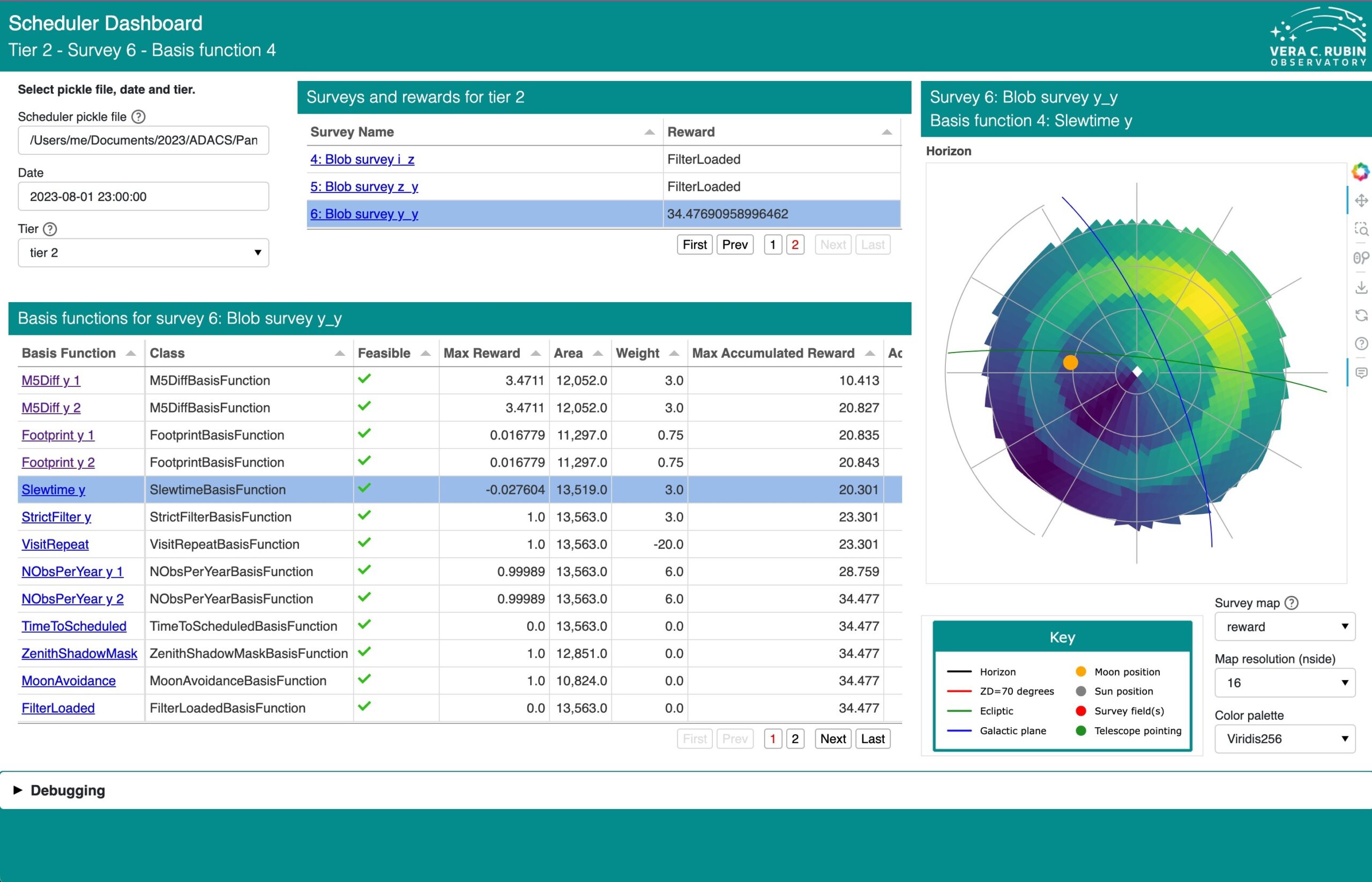Dashboards and Exoplanets – Alice Serene
I had the privilege of undertaking a three-month ADACS internship from June to September 2023. Before commencing the internship, I provided the management team with a list of my desired skills and, in return, they offered me a list of suitable projects. I selected two–one a visual and creative project, and another more mathematical–and I worked on these simultaneously over the three months. With a background in computer science and mathematics, I greatly enjoyed learning the domain knowledge required for these projects, which included both observational and theoretical astronomy.
The first of my two projects involved the design and development of a scheduling dashboard to be used by the telescope operators at the Vera C. Rubin Observatory. At the time of my internship, the observatory was still under construction, with observing expected to begin in 2025. Our ADACS development team consisted of myself and one other developer, and we liaised with the Rubin science team of two North American astronomers, meeting fortnightly over Zoom.
We designed the dashboard based on the science team’s specifications, and iteratively developed the software according to their feedback. The dashboard was written in Python and was supported by a suite of tools including panel, param and bokeh. I had not had previous experience with these tools and enjoyed the process of learning how to apply them. I had a lot of fun with this project, especially on the design side. At the time of writing, the dashboard is undergoing user-experience (UX) testing, and, once the Rubin Observatory is operational, it will be hosted at the observatory atop Chile’s Cerro Pachón ridge.
The second of my two projects involved the refactoring of a suite of tools for mapping stars and exoplanets based on timeseries data. Our ADACS development team, again, consisted of myself and one other developer; the science team consisted of four Queensland-based astronomers. We met every fortnight to exchange questions and provide updates on our progress. The refactoring involved re-writing the old codebase, Starry, which heavily utilised the automatic differentiation tensor library Theano, to use instead Google’s machine learning framework, JAX.
This project was quite challenging. The functions we refactored represented algorithms for solving complex equations and the JAX library has a fairly steep learning curve. Now, having passed through the effortful learning process, I appreciate having the framework in my toolkit. The science team hopes that this new codebase, Jaxoplanet, can be used to analyse the high-fidelity data coming out of the James Webb Space Telescope (JWST) to investigate the existence and statistical nature of exoplanets.
In addition to fortnightly project meetings, the entire ADACS team also met every Tuesday to exchange project updates and socialise as a team. I felt very welcome, included, and valued as a member of the team, and I enjoyed learning about the other projects being worked on. ADACS has a great management team and I felt supported throughout my internship, from being given the freedom to choose my projects, to what was reiterated to me many times: that the internship was for me to learn and have experiences as I so desired. The absence of pressure and demand for productivity was an appreciated contrast to my university experiences, and I believe this enabled me to, not only learn valuable skills and become familiar with new tools, but also contribute meaningfully to projects which will themselves, hopefully, contribute meaningfully to scientific knowledge in astronomy.
I highly recommend the experience of interning with ADACS!

